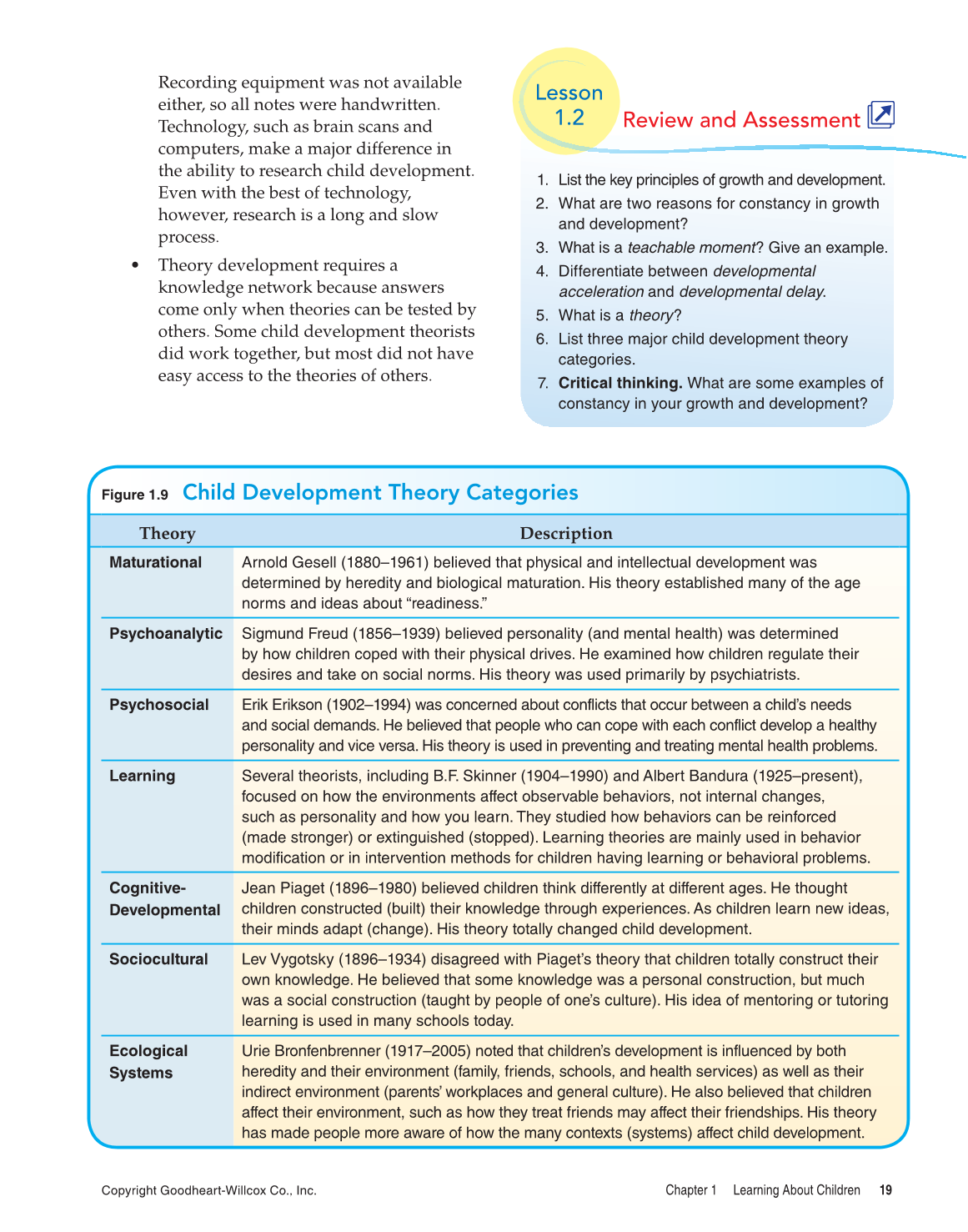Copyright Goodheart-Willcox Co., Inc.
Chapter 1 Learning About Children 19
Lesson
1.2
Review and Assessment
1. List the key principles of growth and development.
2. What are two reasons for constancy in growth
and development?
3. What is a teachable moment? Give an example.
4. Differentiate between developmental
acceleration and developmental delay.
5. What is a theory?
6. List three major child development theory
categories.
7. Critical thinking. What are some examples of
constancy in your growth and development?
Recording equipment was not available
either, so all notes were handwritten.
Technology, such as brain scans and
computers, make a major difference in
the ability to research child development.
Even with the best of technology,
however, research is a long and slow
process.
• Theory development requires a
knowledge network because answers
come only when theories can be tested by
others. Some child development theorists
did work together, but most did not have
easy access to the theories of others.
Figure 1.9
Child Development Theory Categories
Theory Description
Maturational Arnold Gesell (1880–1961) believed that physical and intellectual development was
determined by heredity and biological maturation. His theory established many of the age
norms and ideas about “readiness.”
Psychoanalytic Sigmund Freud (1856–1939) believed personality (and mental health) was determined
by how children coped with their physical drives. He examined how children regulate their
desires and take on social norms. His theory was used primarily by psychiatrists.
Psychosocial Erik Erikson (1902–1994) was concerned about conflicts that occur between a child’s needs
and social demands. He believed that people who can cope with each conflict develop a healthy
personality and vice versa. His theory is used in preventing and treating mental health problems.
Learning Several theorists, including B.F. Skinner (1904–1990) and Albert Bandura (1925–present),
focused on how the environments affect observable behaviors, not internal changes,
such as personality and how you learn. They studied how behaviors can be reinforced
(made stronger) or extinguished (stopped). Learning theories are mainly used in behavior
modification or in intervention methods for children having learning or behavioral problems.
Cognitive-
Developmental
Jean Piaget (1896–1980) believed children think differently at different ages. He thought
children constructed (built) their knowledge through experiences. As children learn new ideas,
their minds adapt (change). His theory totally changed child development.
Sociocultural Lev Vygotsky (1896–1934) disagreed with Piaget’s theory that children totally construct their
own knowledge. He believed that some knowledge was a personal construction, but much
was a social construction (taught by people of one’s culture). His idea of mentoring or tutoring
learning is used in many schools today.
Ecological
Systems
Urie Bronfenbrenner (1917–2005) noted that children’s development is influenced by both
heredity and their environment (family, friends, schools, and health services) as well as their
indirect environment (parents’ workplaces and general culture). He also believed that children
affect their environment, such as how they treat friends may affect their friendships. His theory
has made people more aware of how the many contexts (systems) affect child development.
